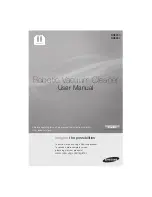
27
Additional Hints
Do not point hot steam towards cold or frosted window panes. Due to the
quick temperature change the window pane might break. After making a basic
cleaning procedure, preheat cold panes from a distance of approx. 10 cm.
Attach the window squeegee (19) and moisten the glass with steam from a
distance of approx. 5 cm. Now draw the rubber blade across the pane, strip
by strip, working from top to bottom. To avoid smears, wipe the rubber blade
dry after each strip.
Do not point hot steam directly to the sealing of the window round the frame;
otherwise the seal could be damaged.
Do not clean unsealed wood floor or laminate with the steam cleaner. If you
want to clean laminate or parquet floors that are not oiled or waxed and have
been laid and glued by professionals please check first with your floor manu-
facturer to ensure suitability to steam cleaning. Reduce the steam amount to
a minimum by turning the steam controller (1) to the setting MIN and prefera-
bly use 2 cotton cloths simultaneously. Do not hold the floor brush for long
time on one place so that as little steam as possible reaches the floor. Make
sure that no puddles are formed while cleaning.
To remove stubborn dirt on tiled floor, first clean the floor with the brush.
Scrub over the surface, the strong bristles will remove dirt mechanically.
Finally clean the floor with the large cotton cloth (18). Quickly push the floor
brush back and forth and clean grouting by moving the floor brush not only
across but additionally along the line of the joints.
Carefully clean kitchen cupboards and household furniture, doors and other
polished or plastic-coated surfaces. If steam is applies for too long, wax,
furniture polish, coatings or paint could be lifted off. To clean such surfaces,
apply steam on the cloth and wipe the surface with the damp cloth only.
Do not direct steam onto glued edges. The glue strip could be detached.
For cleaning stainless steel surfaces such as taps, only use the detail nozzle
(16) or the bend nozzle (24), to avoid scratching the surface. Pour a few
drops of vinegar on thick layers of limescale and leave the solution for approx.
5 minutes to soak. When regularly steaming the stainless steel surfaces less
limescale will be formed.








































